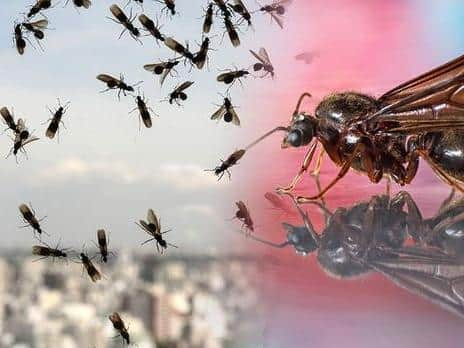Milton Keynes is under invasion - by flying ants
and live on Freeview channel 276
Yesterday, Sunday, was dubbed Flying Ant Day because the insects swarmed in such huge numbers all over the UK.
Each year millions of the insects take to the skies on exactly the same day in search of new colonies.
Advertisement
Hide AdAdvertisement
Hide AdThey favour hot, still and humid weather, and the weekend's climate was obviously perfect, say experts.


According to the Society of Biology, the Flying Ant Day flight is an important phase in the reproduction of the ant species. During the flight, virgin queens mate with male flying ants and then land to start a new colony.
A spokesman for the Society said: "The types of flying ants we see in the UK are mostly likely to be Lasius Niger ants or simply black garden ants.... They commonly come out on exactly the same day in different locations in the country."
He added: " Their nests have a single queen and typically around 5,000 workers, although there can be as many as 15,000. The ants you see throughout most of the year are workers, collecting food for the colony. Workers are all female and will be alive as adults for about a month.
Advertisement
Hide AdAdvertisement
Hide Ad"The flying ants you see once a year are males and young queens. Each year, normally in July or August, huge numbers of flying ants suddenly appear.
"Queens can live for over 10 years and spend most of their lives in their nest. New queens, however, will leave to mate and found a colony of their own. This ‘nuptial flight’ is why ants fly. Ants mate during flight, so males and young queens both have wings.
"If you look carefully at flying ants you will see some are much larger; these are the queens. The large numbers of flying ants which appear in a short space of time increase the chance of reproduction: there is a very high chance a queen will encounter a male from another nest.
"Once the males and immature queens have mated, the queens then try to start a new nest. The queens lose their wings, and after a ‘flying ant day’ you can sometimes see large ants walking around on their own. These are new queens looking for somewhere to set up their nest."
The ants are harmless and very unlikely to bite or sting.